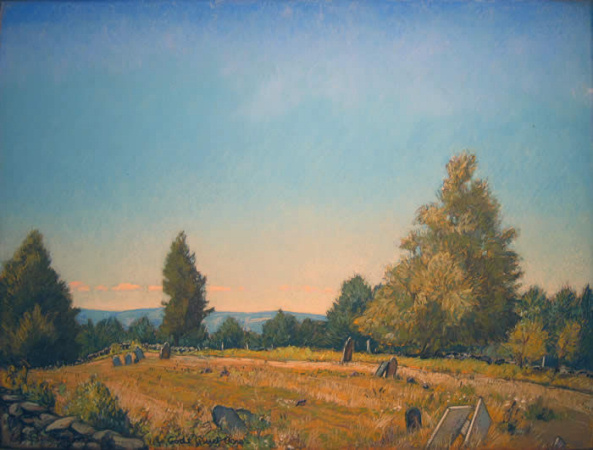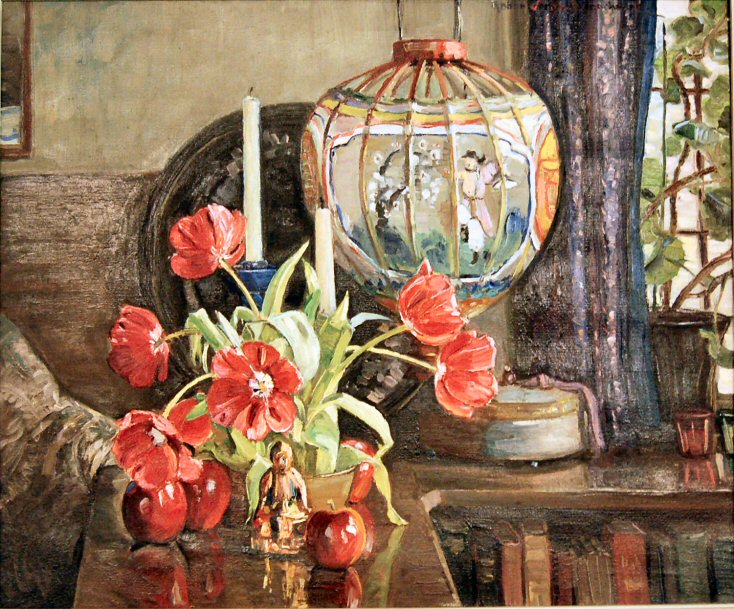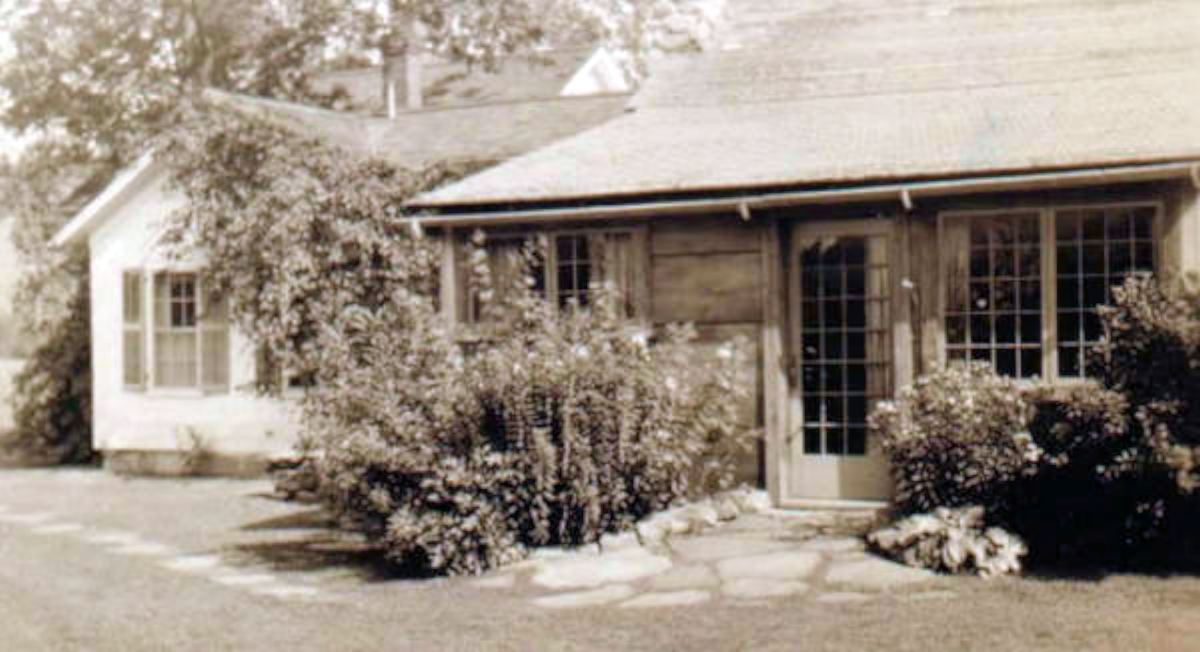Lucy Bridgman (1893-1989) and God's Quiet Acre


Aunt Lucy in 1956 (Lucy Bridgman Merrill)

God's Quiet Acre - a chalk drawing by Robert Strong Woodward

 Northfield Seminary Exhibition Card
Northfield Seminary Exhibition Card
list 18 oil paintings hung between
June 3 to the 12th, 1933 using three
rooms. What is not listed are the 14
chalk drawing to also be shown,
including God's Quiet Acre
Aunt Lucy, Mr. Woodward, and God's Quiet Acre
by James E. Bridgman
My great-aunt, Lucy Whipple Bridgman, first met the artist, Robert Strong Woodward in June of 1933, after attending a showing of his work at Northfield Seminary. Aunt Lucy had graduated from Northfield in 1914, and she returned to the school frequently for alumnae gatherings and other class meetings. Mr. Woodward's show ran from June 3 through June 12, and one day during that time Aunt Lucy stopped in to Margaret Olivia Hall to see his work. She was immediately entranced by the eighteen oils and thirteen chalk drawings on display.
Her first thought, however, was that she would never be able to own "a Woodward," since the oil paintings at that time were selling for $450 and the chalk drawings for $100. Mr. Woodward later told her that before the depression had set in the oils sold for $600 and the chalks for $150, and that one day they would return to those prices. Aunt Lucy was not a wealthy woman, and it was hard for her to imagine spending that kind of money on a work of art.

 The Auditorium, Northfield Seminary
The Auditorium, Northfield Seminary
East Northfield, Mass.
Color printed postcard published by
Detroit Photographic Co. Number 9351.
Copyright 1904. Probably published circa 1907
Born in 1893 into a hard-working family of modest means, Aunt Lucy had been raised on a farm in Westhampton, Massachusetts, the youngest of six children. After graduating from Northfield, she taught for a year and a half in the one-room schoolhouse in Loudville - a small factory hamlet a half mile down the road from her parents' farm. (Coincidentally, Robert Strong Woodward would later tell her that he was descended from some Loudville families.) In 1918, she followed her older sister Ruth to Boston to attend Gordon Bible College.

 The original Frost Hall of the then Gordon Bible College,
The original Frost Hall of the then Gordon Bible College,
now Gordon College. The college moved here, 30 Evans Way
in Boston, in 1917. Bought by Wentworth Institute of Techn-
ology in 1955, it is now Tudbury Hall, a dormitory.
After receiving her degree in 1920, she began work as a secretary for the City Missionary Society,
whose offices were located on Beacon Street in the heart of Boston.
Meanwhile her parents turned control of the family farm over to two of their sons and moved
to 5 Lambert Avenue in Roxbury to provide a home for their two unwed daughters. Aunt Lucy loved her work in Boston but it was definitely not highly paid.

 Clifton Spring Sanitarium
Clifton Spring Sanitarium
To further compromise her financial situation, in 1931 Aunt Lucy suffered an emotional breakdown and was forced to resign from her work. She spent a short time at the Clifton Springs Sanitarium in New York State, a convalescent home for people suffering from emotional distress.

 The Bridgman family circa 1925.
The Bridgman family circa 1925.
Mary S. Bridgman, Lucy W. Bridgman,
Edwin B. Bridgman, Ruth J. Bridgman,
and niece Mary Lillian Boggs
The next two years she was mostly at home in either Westhampton or Roxbury, during which time
she did not work. Given her lack of employment in the midst of the Great Depression, it is a strong testament to the power of Mr. Woodward's art that after attending his show,
Aunt Lucy was giving serious consideration to spending $100 on one of the chalk drawings. She later said that she felt it was important to feed one's soul, as well as one's body,
and she even attributed her recent breakdown in part to "too much economy."
A few days after visiting the Northfield show, Aunt Lucy and her elderly father - neither
of whom drove - were chauffeured by Aunt Lucy's cousin Bertha Bridgman up to Buckland, where they paid a call at Mr. Woodward's studio. This was at the so-called Hiram
Woodward place on Woodward Road.
Editor's Note:
Woodward's relationship with the property
known as the "Hiram Woodward Place" goes back as far 1914-'15 when he rents a small cottage on the western edge of the property built by the property's current owner, David
Burnham. He would begin renting the main house on the land in 1917 and buy the 9 acre farm after his Redgate Studio fire in May of 1923.

 Open Tulips, 1930-'31
Open Tulips, 1930-'31
This oil painting is just one example of the atmosphere
Woodward liked to surround himself, particularly in his
studios. See the Still Life Gallery for more...
Once again, Aunt Lucy was captivated - not just by the paintings but also by the entire atmosphere that
Mr. Woodward had created in his surroundings. Much has been written about this studio, and of the time and effort Mr. Woodward and his hired man Fabian Stone put into restoring
the beloved old house and grounds. Aunt Lucy, in writing to Mr. Woodward afterwards, said, "I couldn't help taking away the impression of artistic arrangement in every detail." Mr.
Woodward deflected the compliment by writing back, "I was embarrassed to be caught with the studio quite shabby and with faded flowers in the bowl; that is something which
rarely happens!"
In her note to Mr. Woodward Aunt Lucy thanked him for the visit and apologized for interrupting his work. She said that her father had enjoyed the
visit, too, but had been embarrassed to leave without making a purchase. Mr. Woodward wrote back, "Tell your father he need not worry about having called to see my few paintings
last week and having bought nothing. I by no means expected him to walk out with a picture under his arm. It is simply part of my profession to show people who are genuinely
interested what work I have on hand, whether they definitely intend to buy or not."

 Aunt Lucy's mother, Mary Sophronia
Aunt Lucy's mother, Mary Sophronia
Bridgman. God's Quiet Acre was purchased
in tribute to her memory
Although Aunt Lucy's father could not imagine investing money in expensive art - Aunt Lucy said, "he could go Coolidge one better on economy" - she herself had privately made up her mind to purchase a chalk drawing. She was especially drawn to one entitled, God's Quiet Acre, a peaceful scene of an abandoned cemetery in Buckland. She later said that it was the title that resonated with her more than the cemetery scene itself, and that she saw the picture as a memorial to her beloved mother, who had died in 1926 and was now in "God's Quiet Acre" in Westhampton.
She wrote Mr. Woodward,
"When I read the name I immediately felt the spirit of the picture
and it would
have hung permanently in my mind whether I could
have obtained the original or not."
In her letter Aunt Lucy enquired about the specifics of the terms of sale, stressing that she was eager that her father remain in the dark as to the price paid. "He is distressed at my extravagances and I know he'll enjoy the picture much more if left in ignorance on that score - and he'd never guess the amount within a mile!" In his response, Mr. Woodward wrote a general letter that she could share with her family, but in deference to her wishes he enclosed a small sealed envelope entitled, "Personal Word to Miss Lucy W. Bridgman," in which he discussed the financial side of the transaction. Mr. Woodward also wrote, "Fabian, my chauffeur, will deliver the drawing to your sister in Brookline at the address you have given me, next Tuesday or Wednesday." Thus the deal was made and Aunt Lucy, in exchange for a bank note of $100, became the proud owner of God's Quiet Acre.
Her intent from the beginning was that the drawing should hang in the office of her sister Ruth, who was secretary at the Harvard Church in Brookline, and it is not clear why she did not want to keep the picture at home. At one point there was some hesitation about whether the Harvard Church location was suitable, as "the light there wasn't right," but eventually an appropriate location in the church offices was found. There is no record of her father's thoughts on her purchase, or if he ever learned the price, but several times Mr. Bridgman told Aunt Lucy and others how much he had enjoyed the visit to Mr. Woodward's studio.

 Aunt Lucy at a piano, in her 30s
Aunt Lucy at a piano, in her 30s
smiling she plays the keys.

 The Harvard Church in Brookline
The Harvard Church in Brookline

 Aunt Lucy's desk at the Congrega-
Aunt Lucy's desk at the Congrega-
tional Board of Pastoral Supply,

 Aunt Lucy, retired and in her 90's with just a bit of
Aunt Lucy, retired and in her 90's with just a bit of
"God's Quiet Acre" showing above her desk
The Correspondance Continues, a Friendship Forms
Throughout the summer of 1933, Aunt Lucy and Mr. Woodward continued to exchange letters every few weeks. Soon they were discussing favorite books. In her second letter to him she asked, "Mr. Woodward, do you know the two books - The Roadmender by Michael Fairless, and The Prophet by Kahlil Gibran?
If not, may I loan them to you? To me they are the perfection of art in the literary world - at least they are
most satisfying to my soul. I cannot imagine a more perfect setting in which to read them than in your new studio - or out by the brook."
Mr. Woodward wrote back, "No,
I have read neither of the books to which you refer - The Roadmender or The Prophet. I thoroughly love to read, but my strength and time these days are so very limited for executing just
my painting alone that I get little chance for books and so fall behind the march in things literary and progressive. However, someday I should surely like to delve into the two books you
mention."
Aunt Lucy took him at his word and sent to Roxbury to have her sister send the two books out to Westhampton so that she could forward them to Buckland. When Mr. Woodward received the package, he wrote, "About The Prophet by Kahlil Gibran, I have a confession to make. The very second the wrappings fell off your package I realized that I knew the book well, owned it and had read it a number of times!" He said his own copy of the book was larger than Aunt Lucy's and contained "12 very fascinating illustrations by Gibran himself" that, not surprisingly, "meant almost as much to me as the symbolic and imaginative verse itself." He offered to send his copy on to Aunt Lucy so that she could see the images. She readily accepted the offer and wrote, "It is a joy to find so kindred a spirit in the appreciation of The Prophet. I dare expect now that you will enjoy The Roadmender, too."

 The Roadmender by Margaret Fairless Barber
The Roadmender by Margaret Fairless Barber
under the pseudonmyn Michael Fairless. Barber, an
English Christian writer, first published her book of
meditations in 1902. It became an instant classic.
There are two things to note here. The first is Barber
being English. The second, a Christian writer. (See Next)

 The Prophet by Kahlil Gibran. Woodward
The Prophet by Kahlil Gibran. Woodward
has 3 copies of it in his last collection of
books left in his last studio. Gibran, like
another RSW favorite, William Blake, is
a poet, philosopher, and artist. The
trifecta he once aspired to in his youth.
As it turned out, Mr. Woodward did not send the book to Aunt Lucy, for one day in mid-August he personally
delivered it (and another book by Gibran entitled Sand and Foam) to the farm in Westhampton, driven there by his chauffeur, Fabian Stone. The visit was unannounced, and unfortunately
Aunt Lucy had gone in to Northampton for the day, so she missed the call that would have meant so much to her. But Mr. Woodward visited from his seat in the car with Aunt Lucy's sisters.
While at the farm, Mr. Woodward couldn't help noticing the giant elm tree that stood at the foot of the driveway. Aunt Lucy had sent him a picture of the tree, a landmark in the local area,
knowing that Mr. Woodward found great beauty in majestic trees - and probably secretly hoping that he'd be interested in painting it. Before he left that afternoon, Mr. Woodward wrote
Aunt Lucy a short note,

The note left by Robert Strong Woodward and saved by Lucy Bridgman
"Miss Bridgman - I'm so sorry not to be able to wait, but I have duties which require my early return. I've found the wondrous elm (also the old
red barn and silo), had a visit with your sisters, and am coming again soon to make a painting. On that day I'll really write ahead and surely see you.
- Earnestly, Robert
Strong Woodward."
The exciting news that Mr. Woodward might do a painting of the elm erased Aunt Lucy's disappointment that she had missed his visit. "You have fairly taken me off my feet with your decision to do some painting right here on our place," she enthused in a note written the next morning, "I confess that I had hopes of taking you up on a 'high hill' and showing you the 'kingdoms' viewed from there with the hope of tempting you to do some painting here in town. But . . . well, I am wondering how you are ever going to get returns from your efforts here - it gives me a terribly responsible feeling."

 The Bridgman farm in Westhampton around
The Bridgman farm in Westhampton around
1897 showing the "Wondrous Elm."
"Don't be alarmed at the prospect of my painting someday on 'your home place'." replied Mr. Woodward, "I don't need the high places for inspiration. The family elm is a rare and lovely thing. Before the season is spent I hope to make a painting of it. I can't say just when it will be."
The prospect of Robert Strong Woodward doing a painting at the Bridgman farm in Westhampton filled Aunt Lucy with anticipation. She now began planning how to best meet his needs. Her first thoughts were to offer him the use of her summer camp in an old converted farm building. "I am quite at sea in knowing how to plan most helpfully. If your Fabian is a 'chef' as well as a chauffeur, and your health permits camp life, Camp Whip-poor-will will be at your disposal for whatever convenience it may be to you while you are at work here or in this vicinity. Perhaps you can judge that best if you know that there is a living room with stove, kitchen with three-burner oil stove, and running cold water, and breakfast nook, and a separate sleeping cabin (unscreened). The toilet is an improvised affair in the barn. If such a place has any possibilities for serving you I shall be most happy to turn it over to you - for one day or many days."

 New England Farm, 1942
New England Farm, 1942
The "wondrous elm" of the Bridgman farm is very
reminiscent of the "hourglass elm" in this painting
of the Ryan farm on Upper Colrain-Heath Road.
Despite her eagerness to make Mr. Woodward's experience in Westhampton as comfortable as possible,
Aunt Lucy was not aware of the extent of his physical needs and of the extreme measures he went through each morning just to get ready for the day. "Unfortunately it is not at all
possible for me to stay away from home at night," he wrote, "because I have to transport a nurse, many nurse appliances, a hired man, etc." Mr. Woodward made it clear that it would
be far easier for him to make the long drive back and forth between Buckland and Westhampton each day than to try to stay overnight at the farm.
Mr. Woodward
promised to let Aunt Lucy know in advance when he would be coming to Westhampton. As August turned to September, she waited for word of his arrival. As September turned to
October, and as yet no word came, she began to have doubts. In November, she gave up hope that anything would happen that season, and she headed back to Boston for the winter.
Before leaving, she returned Mr. Woodward's books by mail.

 Camp Whip-poor-will
Camp Whip-poor-will
In early December, Mr. Woodward finally wrote, "I am so sorry I am not a better correspondent, but I fear I
am about the worst one in the world. I am always at least a year behind schedule! It isn't that I wish to be, and am satisfied with the fact, but merely that constantly, week after week,
I seem to have more demand on my time than I can ever meet, until months go by and I do not get leisure or free evenings for friendly letters." He went on to say that he had been
particularly busy that fall, having made two trips to Boston and four to Holyoke and Springfield, and had sold six paintings and four chalk drawings. "Since early fall, I've not seemed to
have one hour for personal communion or leisure!"
Still, Mr. Woodward held out the hope that one day he would paint the noble elm. "I have not at all given up thoughts
or hopes of putting your family elm tree on canvass! It happens to be a little far from home to be practical, for a full day's painting, but just the same it is so unusual and inspiring, it is
constantly in my thoughts, and I shall plan to surely paint it this coming season. We will surely have some meetings under it next summer!"

 What remanded of the Hiram Woodward Place
What remanded of the Hiram Woodward Place
after the devastating fire in July of 1934. You are
looking from the yard towards the studio front seen
above. There is nothing left of the studio but its
northeast corner and stone hearth.
Sadly, a stroke of fate intervened early the following summer that effectively put an end to the prospect of
Mr. Woodward doing a painting of the Bridgman elm. On July 3, 1934, while he was at a movie theater in Greenfield, Mr. Woodward's beautiful house and studio were struck by
lightening and completely destroyed by fire. To lose one's home and workplace in an instant, as it were, was devastating, and it was two years before Mr. Woodward was able to pick up
his brushes once more. All thoughts of working in Westhampton were laid aside, apparently never to be entertained again. Eventually the famous elm tree fell victim to the dreaded
Dutch elm disease and was removed.
Aunt Lucy and Mr. Woodward kept in touch for many more years. He always sent her announcements of his upcoming exhibits and
she clipped and saved every newspaper and magazine article about him that she could find. They exchanged Christmas cards for over twenty years. In 1940 she sent him a snapshot of
God's Quiet Acre, by this time hanging over her desk at the Congregational Board of Pastoral Supply, where she started working in 1934.

 The Southwick Place from across Upper Street
The Southwick Place from across Upper Street
sometime in the late 1930s. Putt's Hill in the distance.
In 1941, she attended another showing of his work at Northfield Seminary (June of 1941) and once
again was enthralled by what she saw. Later that same day she visited him at his new studio on Upper Street in Buckland and the visit was "much on my mind" for days.
In every letter they exchanged, mention was made of God's Quiet Acre. In one he wrote, "To me it will always outstand as one of my most beloved creations. It is surprising how
many of my old patrons and friends still ask for it when they call at my studio to see me and my work. Let me hear from it once in a while." And she once wrote, "It has taken me
several years to notice one detail in God's Quiet Acre! I got a big 'kick' last week when I realized that you had very particularly placed your signature outside the stone wall!" In 1947,
they exchanged letters about a problem Aunt Lucy had run into when the walls of her office were painted "Nile green," thus clashing with the "big expanse of blue sky" in the drawing.
Mr. Woodward kindly wrote back with various suggestions to mitigate the situation.

 RSW's 1933 Christmas
RSW's 1933 Christmas
Card to Lucy Bridgman

 Christmas Card to Lucy Bridgman
Christmas Card to Lucy Bridgman
from RSW in 1936

 Christmas time Letter from RSW
Christmas time Letter from RSW
to Lucy Bridgman in 1937

 The Bridgman's 1938 Christmas Card with
The Bridgman's 1938 Christmas Card with
Ruth, Lucy, and their father in front of the fireplace

 Aunt Lucy's 1949 Christmas Card RSW
Aunt Lucy's 1949 Christmas Card RSW
mentions in his last letter to her

 Rev. Charles Clarkson Merrill and his wife, Lucy
Rev. Charles Clarkson Merrill and his wife, Lucy
In January of 1950, Mr. Woodward wrote what was to be his last note to Aunt Lucy. "Dear Miss Bridgman - All the phases of your Christmas card to me were keenly appreciated and I thank you. During the holidays I was ill so kept from mailing greeting cards to friends, as I love to do, but I did not forget you. May the New Year hold the best for you! - Robert Strong Woodward."
Mr. Woodward died in June of 1957. The previous year, when Aunt Lucy had retired from the Congregational
Board of Pastoral Supply, she brought God's Quiet Acre to her apartment in Brookline, where she was then living. In March of 1957, at age 63, she married her former boss, the Rev.
Charles Clarkson Merrill, on his 85th birthday.
They set up housekeeping at 74 Kirkland Street in Cambridge and God's Quiet Acre found a prize location in their apartment.
After Rev. Merrill's death in 1961, Aunt Lucy settled in Northampton, where she lived for many years at 118 North Elm Street, across from Child's Park, and then, for her last eight years
at the Lathrop Home on South Street. When she died in 1989, at age 95, her beloved God's Quiet Acre was hanging on the wall across from her bed.

 Lucy's quiet place
Lucy's quiet place

 Lucy's Headstone
Lucy's Headstone

 The site of God's Quiet Acre today
The site of God's Quiet Acre today

Essay by: Lucy's nephew
James E. Bridgman, 2010
Thank you so much James!
It is nearly 15 years since the website has updated to its current design.
When trying to figure out just how to design a "scrapbook page" that would be flexible enough to incorporate a multitude of images along with an
essay... the Lucy Bridgman was the very first test in that long journey of many iterations to the format we have now. It is remarkable as to how well
the old 2008 page has held up over time. It is a beast of a page with 30 images! By far one of the largest pictures pages we made back then.
All of the images have been updated to today's high speed internet capabilities. Back in 2009, size really mattered when it came to images. Files
sizes needed to be within a certain range to download quickly ( under 1min, lol ) and ALSO to be able to fit in the modest RAM capabilities and
monitors of the time. So much has changed in both speed and memory that we can now clean up and freshen every image to large files you can
view the NOW 34 images more closely. When we first built the new website, videos were are rarity on the internet no less than hi-res imaging.
An average artwork page is roughly 6 kilobites (kb). A large artwork page
is over 13kb and the average scrapbook page is around 30kb. The original Lucy Bridgman page was 30kb, just at the average, and the new one is
42kb. While it doesn't seem like much of a difference, this is primarily due to the advancement of high-resolution monitors and their capability to
size any 12-base (multiples of 12) image to high quality resolution no matter the sceen it is being viewed. So the images are only slightly bigger than
they were in 2008 but your screen fills in the needed pixels to be seen in hi-res quality.
Another important thing about our revision
of the Lucy Bridgman is its "coming full circle moment," of the experience. I was, at best, a neophyte with regard to Woodward no less the business
of art. My job was to build a website an inspiring 82 year old retired country doctor can work on without knowing anything about html or css. A
challenge in and of itself but Larch's style of code writing was more of a challenge than Doc's vision, LOL!
Anyway, today I find myself
in the position of being the leading authority on our beloved artist. I always credit this to the demands of the job of making the website and not any
particular skill other than I have always been an excellent researcher (my degree is in Sociology and I tutored other students in "Social Research
Methods" for a couple of years) with an insatiable curiosity to find the missing parts of the puzzle I see before me. I am a dogged SOB that way.

